I’d like to talk about dahlias, beautiful dahlias.
I have been gardening for a long time now and somehow dahlias have not been on my radar. That may be because they are best bought in tuber form, well in advance of planting season, and I often don’t get my perennials until the start of the season or even during the season. I have had success creating ever-blooming perennial gardens by going to the nurseries throughout the season and buying what is blooming at the time of my visit. This has enabled me to have something in flower from spring through to the first frost and that plan has served me well. But that plan excludes dahlias.
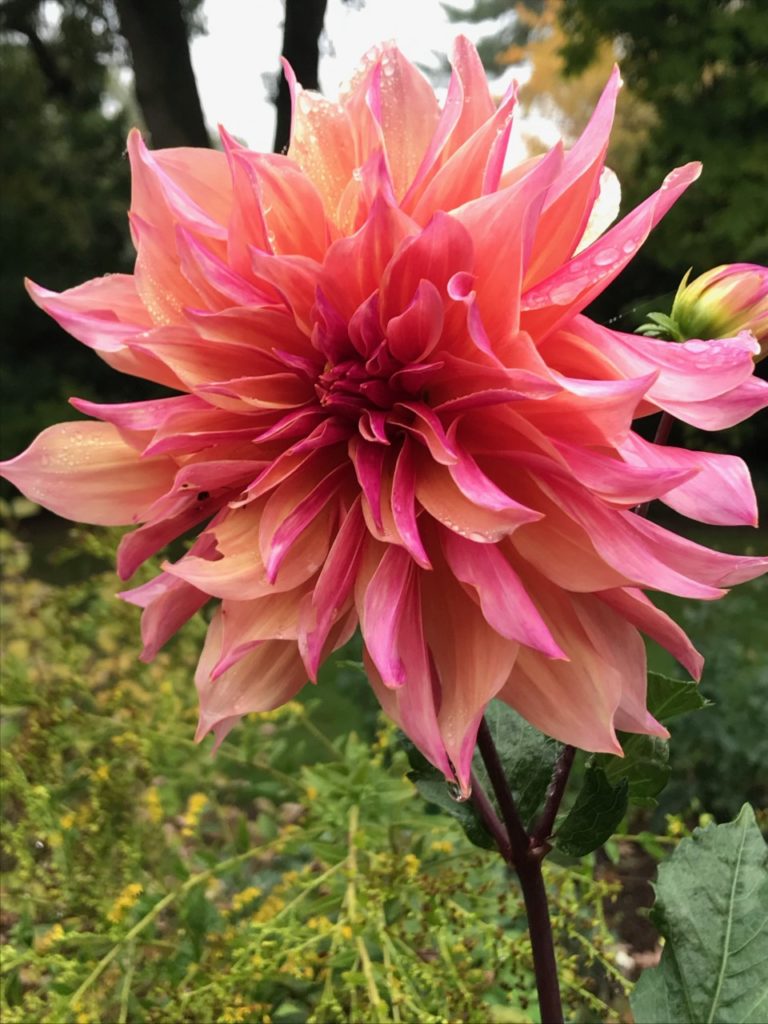
I am a member of the Garden Club of Montclair, and some of our members tend to a garden in town called the Avis Campbell Gardens. The garden was designed by landscape architect and Garden Club member Avis Campbell in 1952. The garden is open to the public and is nothing short of a feast for the eyes, thanks to a group of hard-working members who lovingly tend to it.
This past summer, in the depths of quarantine and with the limitations of activities due to COVID-19, my daughters and I went on a lot of walks around our lovely neighborhood. One of our walks would lead us to the Avis Campbell Gardens, where time and again, I was gobsmacked by the overwhelming beauty of all the dahlias that proliferated the garden. The array of colors, sizes and shapes are extensive and the beauty they offer is amazing. Whenever it all started to get to me, a walk in the dahlias always made me feel better.
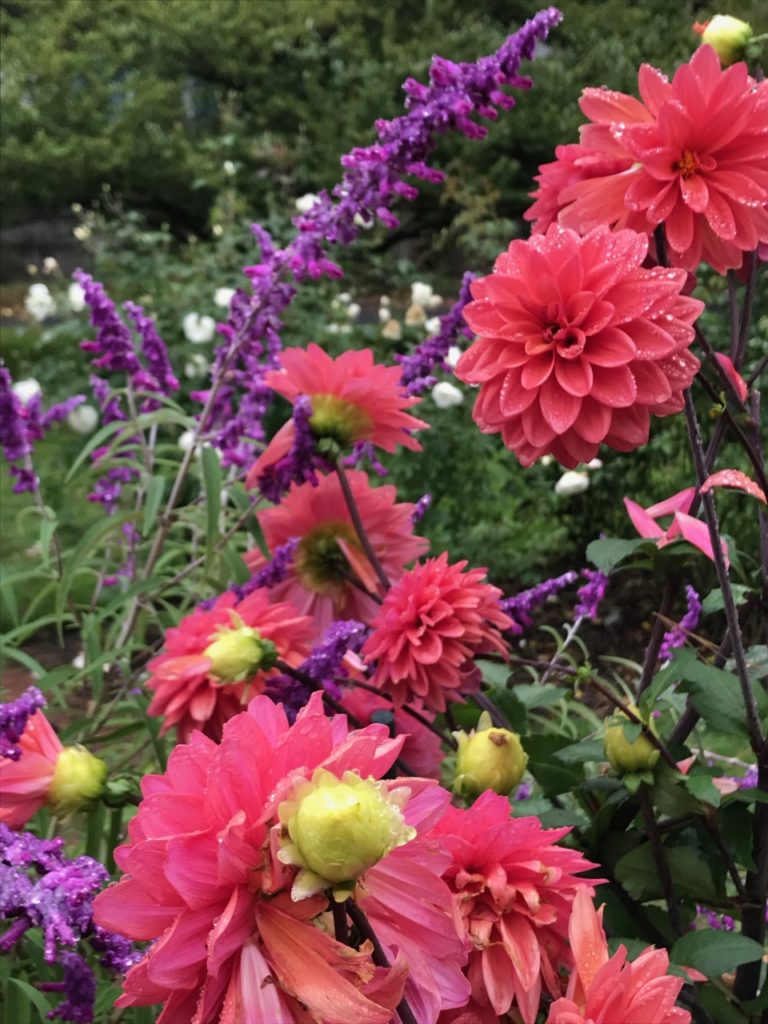
The Avis Campbell Gardens are not the only beautiful space in our town; other notable examples include the Presby Iris Garden, famous for its “rainbow on the hill” every spring, and Van Vleck House and Garden, with its wisteria from 1939 and blooms every year around Memorial Day.
But of course, the aforementioned Avis Campbell is where I find the dahlias. It is like a secret garden, located behind the United Way building in Montclair, but one that should not be a secret. Look for it, find it, and I promise you won’t be disappointed. Of course the roses there are amazing (but that story for another day), this story focuses on the dahlias and gives them the attention they deserve.
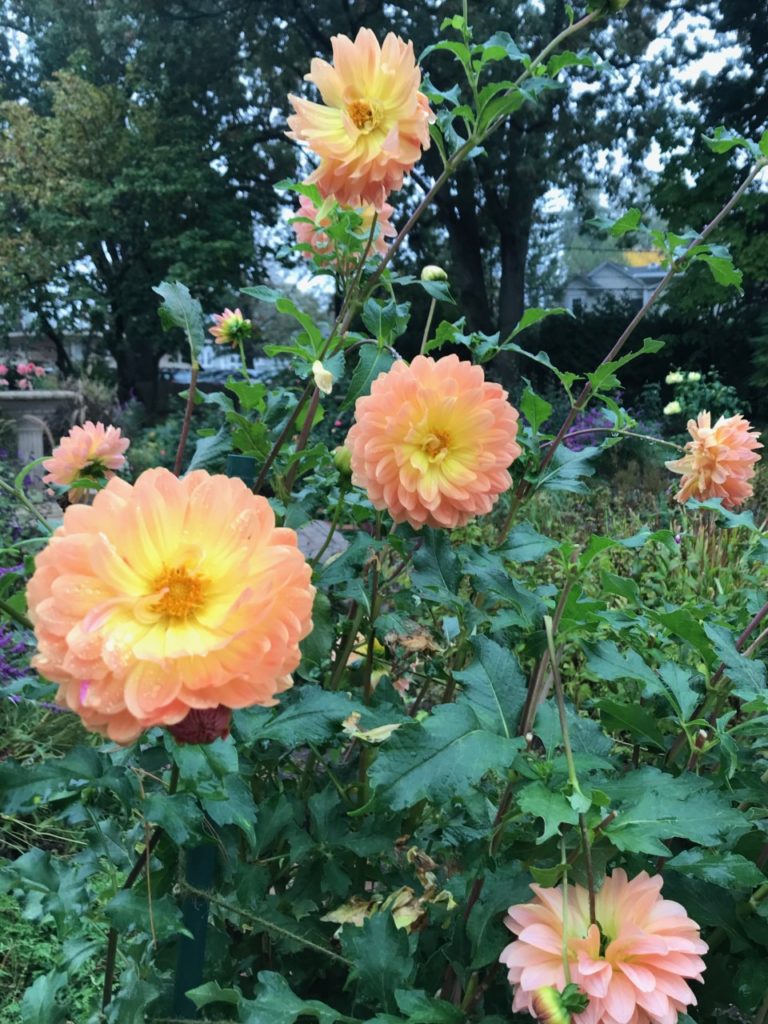
Credit for my new found love of dahlias goes to my friend and fellow Garden Club member, Maureen Sprong. In her soft and pleasant way, she has encouraged and educated the members of our club on dahlias, and her love of them is contagious. She has given workshops on how to grow, fertilize, care for and overwinter dahlias. She started a talk by saying “ready to fall in love?” Yes, I was ready, and yes, I did fall in love.
Dahlia is a genus of tuberous plants that are members of the Asteraceae family. Related species include the sunflower, daisy, chrysanthemum and zinnia. They grow from small tubers planted in spring. Dahlias are native to Mexico and are in fact the nation’s official flower.
Dahlias come in an astounding range of forms and colors. I read somewhere in my research that choosing a favorite dahlia is like going through a button box! They enjoy a long bloom period from summer until late fall. What I found interesting is that of the many dahlia varieties, they were all developed primarily from one or two wild species over the last 200 years.
The genus name honors Dr. Anders Dahl (1751-1789), who was a Swedish botanist. He was a pupil of fellow Swedish botanist, as well as zoologist and taxonomist, Carl Linnaeus, who formalized binomial nomenclature.
Hybrid dahlias have been organized into different classifications. They are as follows:
- Cactus and semi cactus
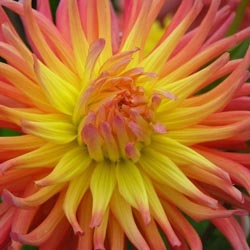
- Decorative dahlias
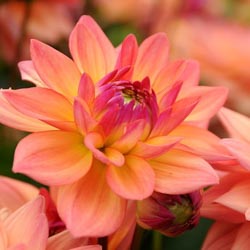
- Pompon and ball dahlias
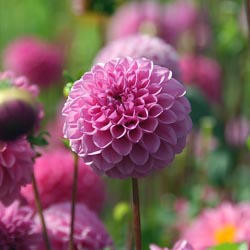
- Anemone and collarette dahlias
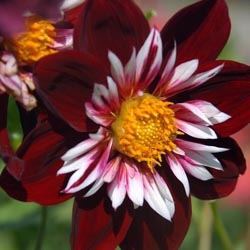
- Mignon and single dahlias
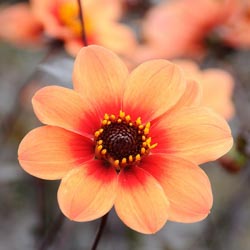
- Peony and orchid dahlias
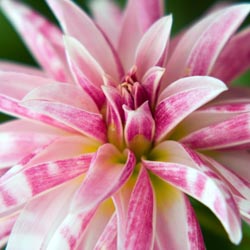
- Miscellaneous dahlias
And now, how to buy, plant, care for, and overwinter dahlias? The following information below is courtesy of Maureen Sprong.
Buying:
Maureen recommends shopping in January and February for dahlia tubers, as they often sell out quickly. I went online last week to order, and although many were in fact sold out, there were still plenty to chose from. (Stay tuned as my garden will be graced by a number of dahlias this coming summer.) Maureen also recommends that you carefully consider height and placement if you are adding them to an established garden.
Planting:
Maureen recommends keeping dahlia heights in line with perennials and shrubs. Tall dahlias should be planted in the back, but with access, so you can deadhead, adjust the stakes, disbud (removing side bud to promote larger central flowers) and fertilize as necessary.
She says support is critical as dahlias can wander a bit if not given direction, and stalks can easily break in heavy rains and winds. She recommends adding the stakes at the time of planting to avoid damaging the tuber. Stakes also serve as a marker until the plants sprout.
Plant in spring, but look for soil to reach 70 degrees before planting. Tubers can easily rot if the soil is too cold or too wet. Adding some peat or organic material to clay soils when planting is a good idea.
Dig a hole 12 x 12” and about 6” deep, lay tuber on its side with eye facing up , add your amendments and/or fertilizer, secure the stake in the hole and cover.
Care and Feeding:
There is no need to water before the tubers sprout. Once they reach 12 inches, pinch out the top shoot for a bushier plant with more blooms. This also keeps the stalk dense; not pinching encourages hollow stems. Dahlias generally need an inch of water per week. Mulch your dahlias heavily once they are taller to keep roots cool, as they run close to the surface.
Some of the fertilizers recommended by Maureen and others who tend to the dahlias at Avis Campbell are:
- Seaweed and fish emulsion every 2 weeks
- Miracle Grow every 2 weeks
- Garden Elements Bud’n’Bloom with an N-P-K ratio of 10-52-8 as a foliar spray every 2 weeks.
Sluggo is recommended to combat snails, slugs and earwigs. Adding a systemic insecticide at planting, as suggested by the Dahlias Society of Georgia, can prevent problems before they happen.
Overwintering:
Dahlias tubers can be dug in the fall and stored for the next season. Wait for the first frost to wilt the plant’s leaves, and then dig the tubers. Maureen hoses down her dahlias and treats them with a fungicide. She lets them dry well, snips off the stem, roots and skinny ends, and then packs them in a crate. Some packing options are peat mixed with cedar pet bedding, newspaper or perlite.
Where to Buy Tubers:
- Arrrowhead Dahlias
- Swan Island Dahlias
- Old house Dahlias
- Summer’s Dream Farm
- JS Dahlias
- Five Fork Farms
- White Flower Farms
Old House Dahlias has instructional videos available on its website that show fall and spring processes.
Other References include:
- The American Dahlia Society
- Longfield Gardens
- Dahlia Society of Georgia
Thanks again to my friend and dahlia lover, Maureen Sprong.


Cynthia, this is a wonderful primer oh beautiful dahlias.
Thank you,
Cathy
Thanks for this wonderful site. I better w on line and order my tubers